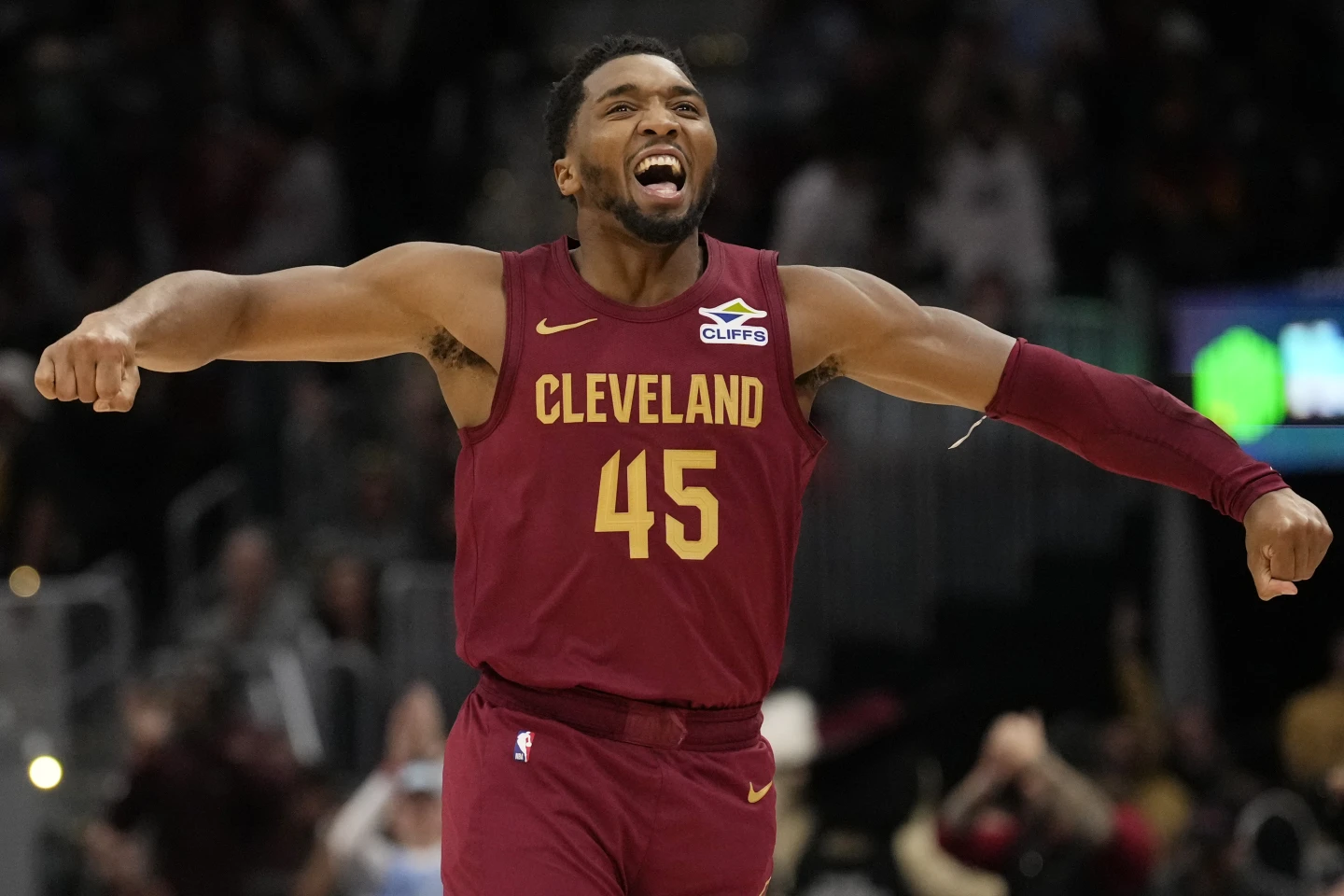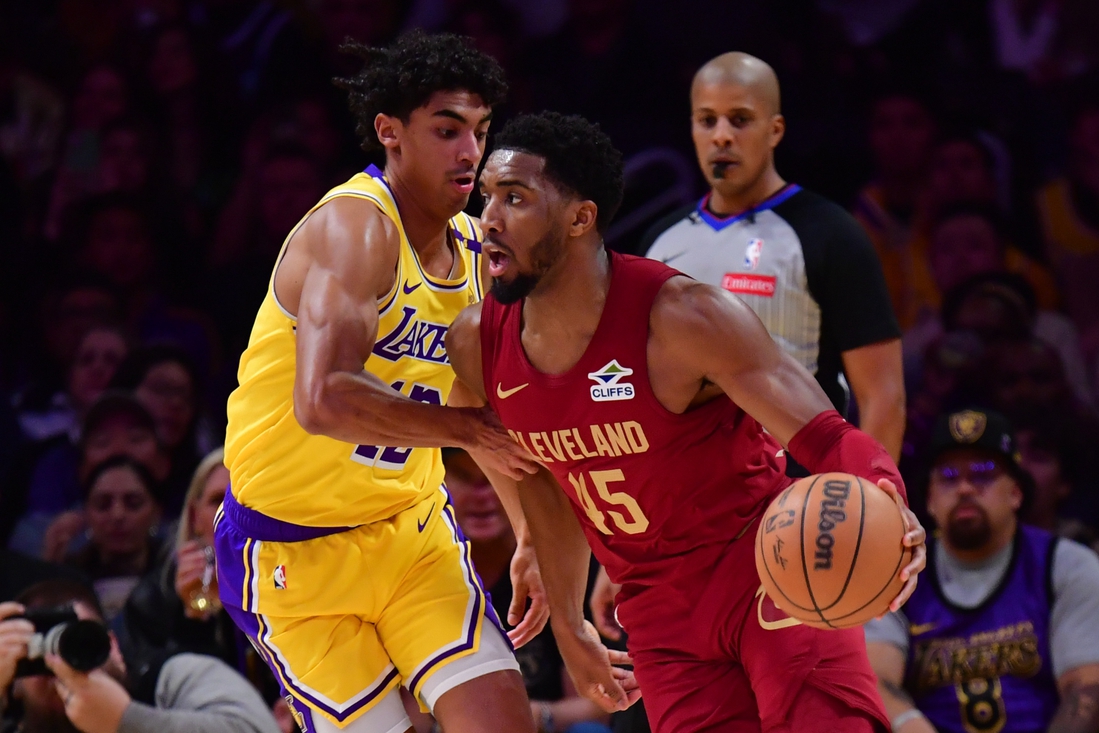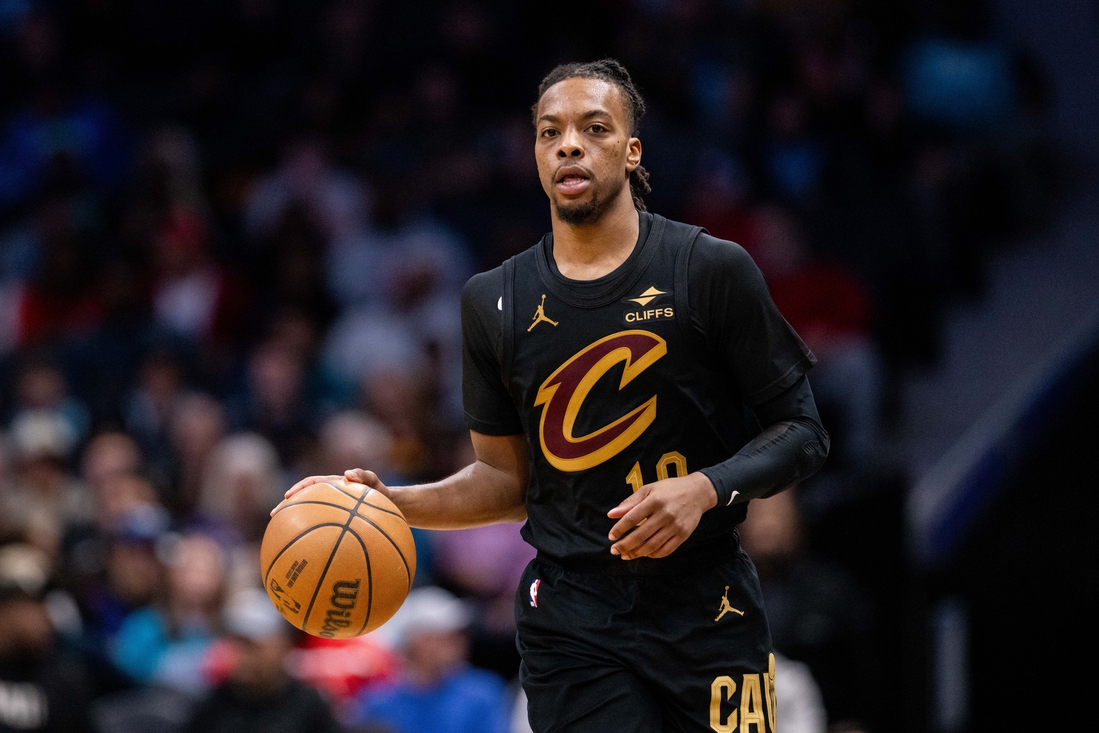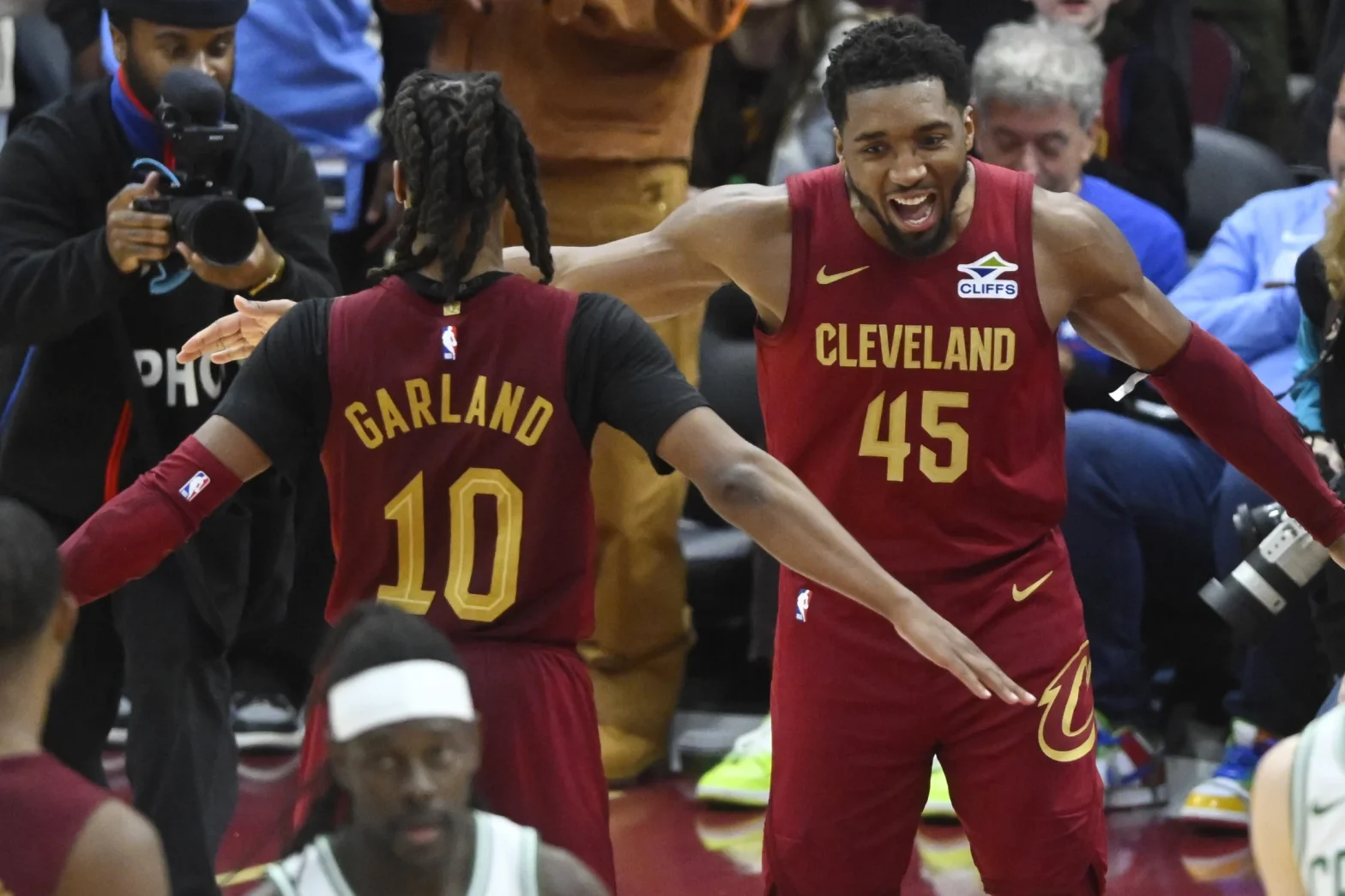If you want to find accuracy, a good place to start is by looking at the best shooter of all time.
“You’re as good as your record says you are,” Stephen Curry said. “So they’re pretty damn good right now.”
“They” refers to the Cleveland Cavaliers, and Curry said that on Nov. 8, after watching them score 83 points in the first half against his Warriors, leading to a big win. Almost two months later, what their record shows suggests that “pretty damn good” might be an understatement.
The Cavaliers are set to play the Mavericks on Friday, where they are favored by 7.5 points at BetMGM. They are on an eight-game winning streak, with every victory coming by a margin of more than 10 points. In December, they finished with a 12-1 record, winning by an average of 15.2 points per 100 possessions, the highest in the league.
They head into Dallas with a 29-4 record — 29-4! — making Cleveland just the 12th team in history to start a season with 29 wins in 33 games. Six of the first 11 teams that did this went on to win the NBA title. Curry’s 2015-16 Warriors, who started 31-2 and won an NBA-record 73 games, came close but lost in one of the best NBA Finals ever.
After missing a total of 89 games last season, the core four of Donovan Mitchell, Evan Mobley, Jarrett Allen, and Darius Garland have only missed four games this season. It turns out that having all your top players available helps a lot.
New head coach Kenny Atkinson has also been a big help, especially in how he manages the playing time of the core four. He has mostly paired Mitchell with Mobley and Garland with Allen, and Cleveland has been very strong in both setups. He has also helped improve the Cavaliers’ offensive performance.

Cleveland’s Winning Approach
The Cavs are playing at a faster pace, creating more possessions (currently 8th in pace this season, up from 24th last season), and taking shots more quickly (38.9% of their attempts are within the first nine seconds of the shot clock, up from 32.3% last season).
This trend continues even after giving up a basket; they’ve reduced the average time they take to shoot after an opponent’s score by more than a second, according to Inpredictable. Their commitment to applying pressure can overwhelm opponents. (“Every coach’s nightmare,” Atkinson said. “Getting dinged in transition.”)
A more balanced offense, which uses Mobley as a central figure in half-court plays and gives the guards the ball less often, has reduced Cleveland’s dependence on Mitchell creating his own shots. Throughout his career, Mitchell has been the main player, the focus of his team’s offense. This approach has been successful, earning him five All-Star selections, an All-NBA nomination, and seven straight playoff appearances.
However, this role demands a lot from a player who is approaching 20,000 career minutes, holds the sixth-highest usage rate in the NBA since entering the league in 2017, and has dealt with groin, hamstring, knee, and calf injuries in the past two seasons.
Atkinson’s strategy to involve Mobley and Garland more in the offense also aims to balance Mitchell’s current performance and his long-term health. So far, it has worked well. Mitchell’s minutes, field-goal attempts, touches, time of possession, and usage rate are all down, while his per-possession production has remained consistent.
The percentage of Mitchell’s baskets that have been assisted, rather than created by him, is at an all-time high.

Mitchell and Garland spending more time off the ball has helped create a more balanced offense. This isn’t just one player dominating; it’s more like improvisation, a team effort where one player builds on what another has done, and everyone has a chance to score.
“The actions, the spacing, the way we’re moving, our pace,” Mitchell recently told reporters. “It’s like: It’s not predictable. You never know where each guy’s going to be.”
Even those who were optimistic about the Cavs before the season likely didn’t expect them to start out playing like one of the most powerful teams ever. That may sound like exaggeration, but it’s actually true. Consider:
The Cavs have won their 29 games by an average of 11.88 points, which would be the fifth-highest average margin of victory in NBA history, according to Stathead. The only teams to finish a season with a higher average margin are the 1972 Lakers, the 1971 Bucks, and the 1996 Bulls. All three went on to win the NBA title.
The simple rating system, which looks at a team’s point differential and strength of schedule, ranks the Cavs as one of the top 12 strongest teams in NBA history. Nine of the 11 teams that finished a season with a higher SRS than Cleveland’s reached the NBA Finals, and eight of them won the title.
The Cavs are not only leading the NBA in points scored per possession, but according to Jared Dubin’s adjusted efficiency metric, Cleveland has the third most efficient offense since the ABA-NBA merger in 1976.
Because the Cavs are also great on defense—tied with the Timberwolves for sixth in defensive efficiency, according to Cleaning the Glass—they head into Friday with a scoring margin adjusted for the era of plus-10.4 points per 100 above the league average, according to Dubin. Only eight teams since the merger have finished with a margin higher than 10. Six of them won the title.
“They have the best record in the NBA, they have the No. 1 offense in the NBA, and no one seems to be able to stop that team,” Nuggets head coach Michael Malone told reporters after Cleveland crushed Denver with a 149-point performance. “… Really, when you play them, there is no margin for error.”
This success is partly due to a mix of careful play and excellent shooting.
Even though Cleveland’s offense relies on fast, sharp ball movement, the team actually ranks just 28th in the NBA in total passes per game. When you don’t pass the ball much, and when the players in charge of running the offense—Garland, Mitchell, and increasingly Mobley in the starting lineup, plus Ty Jerome and Caris LeVert off the bench—take good care of it, the ball stays in their hands more often. After finishing 17th in turnover rate last season, the Cavs have moved up to third in how rarely they turn the ball over.
Not turning the ball over means more chances to take shots. And with a team full of great shooters, that makes life difficult for opposing defenses.
Seven Cavaliers are making at least 40% of their 3-pointers. This doesn’t include Sam Merrill, who shot 40% last season; Dean Wade, who shot 39% last season; Georges Niang, hitting 38% this season; and the recently returned Max Strus, a career 36.4% shooter on more than six attempts per game.
After being criticized during his first two seasons, Mobley has improved his shooting from long range; he led the NBA in 3-point accuracy in December, hitting 52.4% of his 3-pointers while taking 3.5 per game.

(Allen, the only player in the Cavs rotation who doesn’t shoot 3s, has become very effective near the basket, shooting almost 70% on 2-point shots and being one of the best pick-and-roll finishers in the NBA.)
As a team, Cleveland is shooting an impressive 40.7% from 3-point range, which leads the NBA and would tie for the fifth-best percentage in NBA history. They’re shooting even more 3s as the season goes on, increasing their 3-point attempts each month.
The Celtics are on track to become the first team ever to take more than half of their shots from 3-point range. In December, 3-pointers made up 49.5% of Cleveland’s shots.
Like the Celtics last season and the Knicks since pairing Karl-Anthony Towns with Jalen Brunson to boost their offense, the real advantage of all that 3-point shooting becomes clear when Cleveland uses it to drive into the paint.
After finishing 17th in drives per game last season, the Cavs are now 4th this season, with Garland and Mitchell driving to create easy shots for themselves or passing out to their shooters. Cleveland ranks 6th in catch-and-shoot points per game; only the Knicks and Celtics score more points per possession on spot-up shots.
“They’re so intentional about the extra pass,” Draymond Green told reporters after former Warriors assistant Atkinson’s new team defeated Golden State in November. “And this is a staple for us: to drive, swing, swing. That’s what we preached for years, and they diced us up with it.”
When you combine excellent shooting with very few turnovers, you create a strong offense. The Cavs have only been held to less than one point per possession once—during their Nov. 29 loss to Atlanta—and have posted an offensive rating below the league average just five times in 33 games.
What makes them even more dangerous is their ability to pair great offense with 48 minutes of top-notch rim protection. Among 126 players who have defended at least 75 shots at the basket this season, Allen ranks 7th in defensive field-goal percentage (50.6%), Mobley ranks 31st (56.5%), and defensive specialist Wade ranks 10th, just ahead of Brook Lopez and Daniel Gafford.
